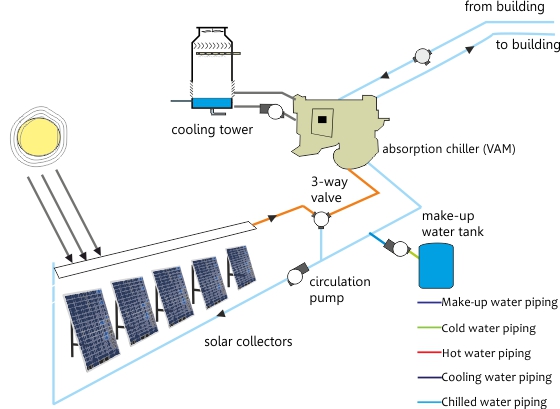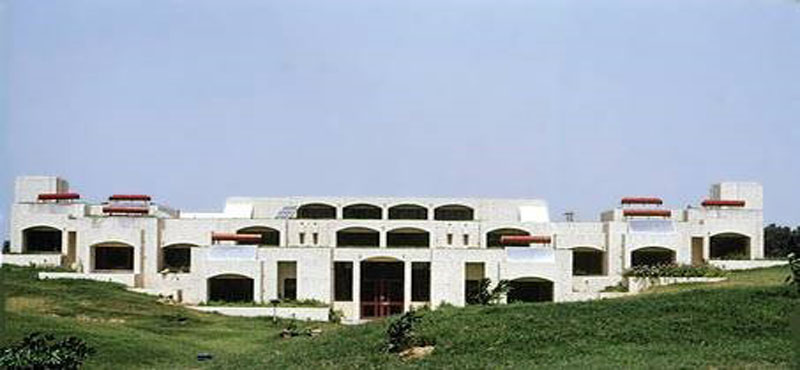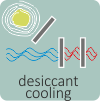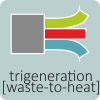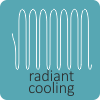Cooling loads in tropical countries like India peak during the hot summer season when solar radiation is available in abundance. Thus, application of solar cooling technology uses a renewable source of energy to reduce the cooling loads when air conditioning demand is at its annual high. Principle behind the functioning of solar cooling is the use of solar heat/ thermal energy to re-generate the refrigerant in absorption chiller or desiccant in a desiccant chiller.
Absorption chillers comprise of the following components:
- Evaporator: where the refrigerant evaporates at a very low pressure and temperature and is absorbed by the absorbent. The process results in extraction of heat from the refrigerant and provides chilled refrigerant as an output.
- Generator: The mixture of absorbent and refrigerant is then introduced in the generator. Steam or hot water produced through the solar panel devices is used to vaporize refrigerant.
- Condenser: The vaporized refrigerant will be cooled down in condenser and maintained at low pressure. This cooled refrigerant will be further used in evaporator for generation of chilled water for air conditioning.
Table: Advantages and disadvantages of evaporative cooling systems
| Pros | Cons |
| Attractive payback when configured with power generation and hot water heating | Requires significant space for the solar panels and solar concentrators; thus suitable for large projects only |
| Low distribution losses in the range of 5 to 10 percent; conventional technologies is between 75-80 percent | Cost almost twice as much as conventional chillers |
| Eliminate the use of CFC, HFC, and HCFC refrigerants | Requires greater pump energy compared to electric chiller |
| System operations generates less noise and vibration | Higher flow rate of condenser water required as absorption chillers have lower COP’s |
| High efficiency in triple effect absorption designs | Requires large cooling tower capacity compared to electric chiller as larger volume of water is circulated |

